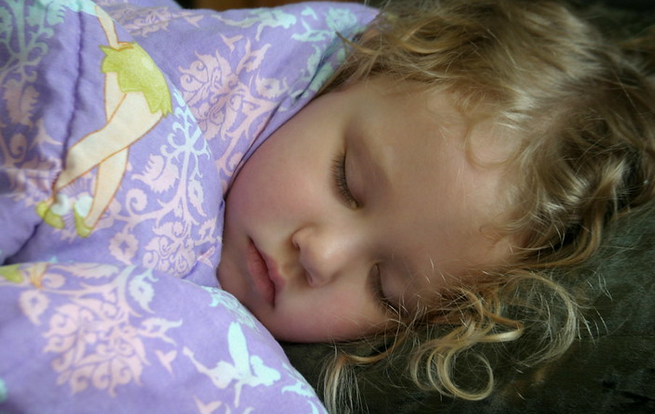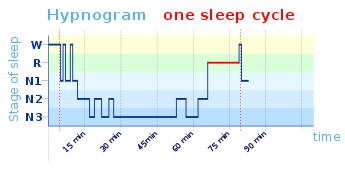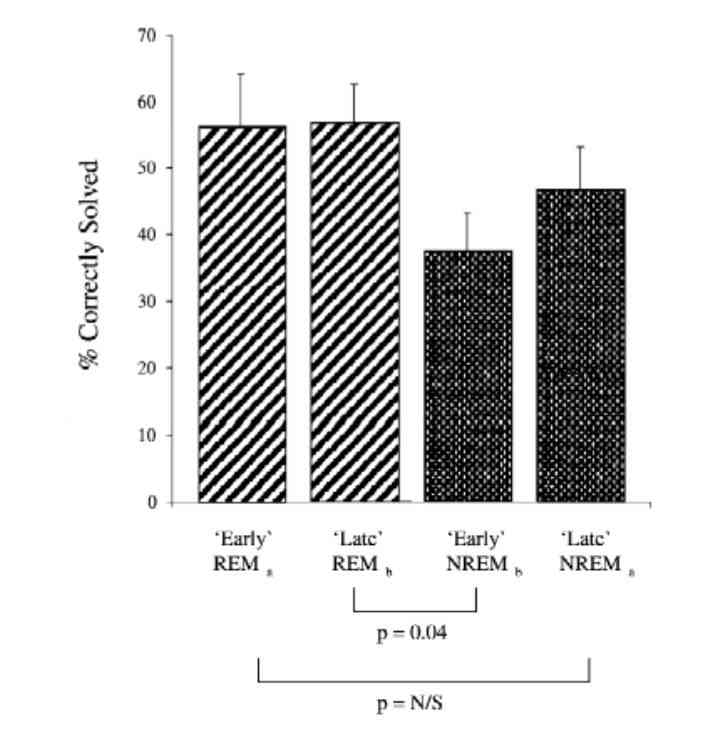
Each night, as we close our eyes and evade the waking world, we may move towards a unique state of consciousness, a non cognitive state that incorporates experiencing and processing the past, the present, and even preparing for the future, or as we simply call, dreams.
Dreaming sleep is usually identified with rapid eye movement (REM). As sleep cycles continue, we tend to shift to a higher proportion of REM sleep.But what are the transitions that lead us to experiencing REM sleep? And what are the physiological changes that accompany these alterations?
1. Sleep Cycle
The sleep cycle is an abrupt alteration between the slow-wave and paradoxical phases of sleep. It usually takes 90 minutes to complete one sleep cycle.
Three methods are used in the sleep architecture measurement that able us to identify sleep phases. These methods are:
- Electroencephalography: the measurement of voltage fluctuations resulting within the neurons of the brain.
- Electromyography: the measurement of electrical activity produced by skeletal muscles.
- Electrooculography: the measurement of eye movements.
All these methods lead to proving the existence of two alterations that our bodies experience throughout the night: REM sleep (rapid eye movement sleep) and non-REM sleep(non-rapid eye movement sleep).
Each differs from the other based on the nature of brainwaves and the physiological processes that manifest in each one.

2. Non-REM Sleep
Non-rapid eye movement sleep (non-REM sleep) is dreamless sleep, also known as "quiescent sleep". During non-REM sleep, there is usually little or no eye-movement, slow brainwaves and low heart rate and blood preassure.
Non-REM sleep consists of three distinct stages:
Stage 1:
This is the beginning of sleep in which a person can be easily awakened, it lasts 5 to 10 minutes. During this stage, the observation of brainwaves on an electroencephalogram (EEG) in a sleep lab, alpha waves disappear and theta waves appear. It is also very common to experience "hypnic jerks" (brain jerks occur with a falling sensation when a person is laying in bed. It might or might not wake the person up).
Stage 2:
This is also a stage of light sleep that occurs shortly after the ending of stage 1. It lasts about 10 to 25 minutes. This phase is characterized by sleep spindles (short bursts of high frequency brain activities) and K complexes (single long delta waves that last for only a second).
According to the National Institues of Health (NIH), a regular person spends more time in this stage as sleep cycles repeat during the night.
Stage 3:
Also known as "slow wave", "deep sleep", and "delta". This is a phase where the brain is less responsive to external stimuli. It's an essential phase for human beings in order to get fully rested, gain energy and freshen up for the next day. This stage lasts about 20 to 40 minutes. If you wake an asleep subject during this stage, he/she would feel dazed and unsteady. This is why you might not want to take naps more than half an hour, so the transition to this phase is avoided.
No eye-movements occur during this stage and breathing rate decreases to its lowest.
Dreams, sleep-walking and nightmares are more common in this stage, but they are less memorable.
**3. REM Sleep **
After going through all three stages of non-REM sleep, a person begins REM sleep. This happens after 90 minutes of falling asleep.
Rapid Eye movement sleep (REM sleep) , also known as "paradoxical sleep" and "desynchronized sleep" is a unique phase of sleep in mammals and birds. A person is almost immobile during this type of sleep due a deeper relaxation of arm and leg muscles. Although the body is "paralyzed", the brain acts somewhat awake, with cerebral neurons firing with the same intensity as in a wakeful state. The asleep subject also experiences increased heart rate and and a rapid side-to-side eye -movement, beneath closed eyelids.
This rapid eye-movement results in intense, vivid dreams that only parts of them are remembered the next morning.
According to the National Sleep Foundation, the brain processes information from the day during REM sleep so it can be stored in long-term memory. It makes more sense when we correlate this study to how REM sleep helps boosting creativity and assists abstract problem solving.

In fact, dreams have always inspired people to make exceptional art and music that had an immense impact on these fields. For example:
- Paul McCartney says the melody for the song Yesterday came to him in a dream.
- Salvador Dali connected surreal paintings to dreams.
- Mary Shelley claimed a waking dream gave her the inspiration for Frankenstein.
4. What happens if we don't get any REM sleep?
Researchers originally thought that no REM sleep meant having no dreams. And although some studies genuinely backed up these theories, more studies did not.
According to Dr.William Dement at Stanford University of School of Medicine, during a study in which subjects were awakened every time they began their REM sleep phase, they experienced various psychological disturbances such as anxiety, irritability and difficulty to focus on simple tasks. They also experienced a noticeable increase in appetite.
However, the most recent ideas on REM sleep are associated with learning. Researchers are actively trying to identify the influence of REM sleep on physical learning skills.
This connection seems valid due to the fact that babies and young children experience much more REM sleep than adults.
Follow US ON HIVE>>> @utopiaeducators


